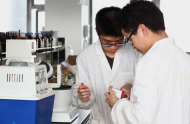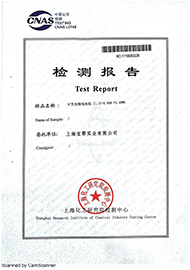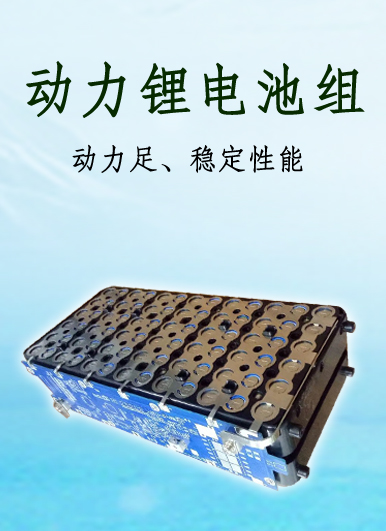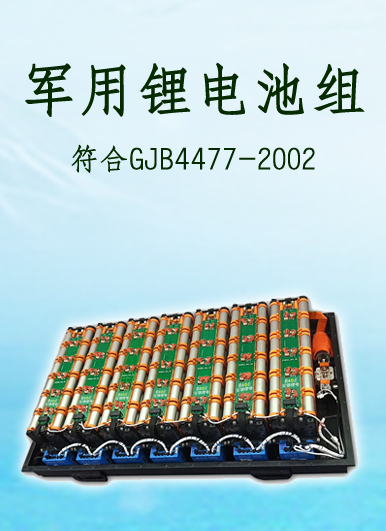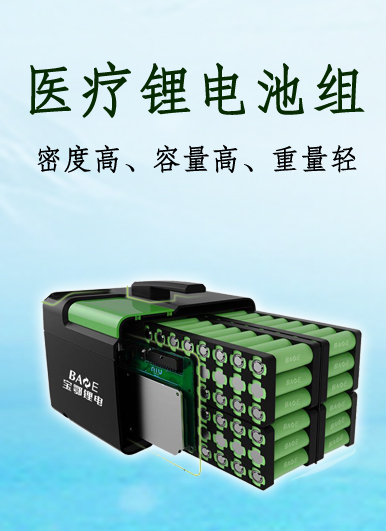The specific reasons for the constraints are as follows:
1. Core Materials for Lithium Batteries
The core technology of lithium batteries mainly involves raw materials, cores, equipment, battery packs and other aspects, which plays a decisive role in the performance and cost of batteries. Although China's lithium battery industry chain has been relatively perfect, but in the diaphragm, PVDF, water-borne binder, aluminum-plastic film, NCA, automation equipment, cobalt ore and other aspects are also subject to foreign technology or resources constraints.
2. National policy on lithium batteries
"Notice on Adjusting and Improving the Financial Subsidy Policy for the Promotion and Application of New Energy Vehicles" further clarifies that new energy vehicles with high endurance mileage and high energy density are the direction of future policy subsidy incentives. Influenced by policy factors such as the decline of new energy vehicle subsidy standards and the expected strictness of subsidy standards, most lithium battery enterprises are facing the dilemma of "squeezing up and pushing down".
3. Environmental Protection of Lithium Battery Factory
Since 2017, environmental protection requirements have become increasingly stringent, and more attention has been paid to environmental protection in the planning of chemical industry parks. As a result, there are fewer matching manufacturers for equipment production near the industrial park. It will be difficult for equipment construction to continue and meet the planning of the park.
Affected by environmental protection, some upstream silicone monomer manufacturers stopped production and overhaul, resulting in a low start-up rate, resulting in tight supply; raw material prices such as methanol and metal silicon continued to rise, driving the upstream silicone monomer DMC market to rise, resulting in the upstream silicone raw material prices continue to rise since 2017, and the upstream silicone monomer DMC prices continue to rise. The soaring price has reached a new high in the past years, which has resulted in the production enterprises with more silicone monomer-intermediate capacity in the raw material enterprises of the industry benefiting greatly. The downstream enterprises of silicone are facing difficulties in production and operation. Domestic and foreign downstream enterprises have increased the terminal price of products to cope with the sharp rise of raw materials in the upstream.
4. INFLUENCE OF LITHIUM BATTERY INDUSTRY
Wind data show that 42 of the 100 listed companies in the lithium battery sector have negative operating cash flow in 2017. Among them, because of the tight cash flow, the company can not even operate on a daily basis.
With the rapid expansion of production capacity, the domestic power battery industry has also appeared the phenomenon of overcapacity, product prices are declining. According to the statistics of OFweek Industrial Research Institute, the price of power battery unit at the end of 2017 was 20%-25% lower than that at the beginning of 2017. However, the price of raw materials for power batteries has not shown a downward trend. This means that power battery companies will bear greater cost and profit pressures. Because of the rising cost of raw materials and the decreasing price of batteries due to the influence of national policies, the cost pressure of battery enterprises is enormous.
According to the statistics of OFweek Industrial Research Institute, up to now, domestic power battery related supporting enterprises have dropped from 150 in 2015 to about 100. This means that less than three years, a third of the power battery companies have been out of business, and the shuffle continues.受到制约的具体原因有以下几点:
1、锂电池核心材料
锂电池核心技术主要涉及到原材料、电芯、设备、电池包等几个方面,对于电池的性能和成本起到决定性作用。我国锂电池产业链虽然已经比较完善,但在隔膜、PVDF、水性粘结剂、铝塑膜、NCA、自动化设备、钴矿等方面还受到国外技术或者资源的制约。
2、锂电池国家政策方面
《关于调整完善新能源汽车推广应用财政补贴政策的通知》,进一步明确高续航里程和高能量密度的新能源汽车是未来政策补贴鼓励的方向。受新能源汽车补贴标准退坡、补贴标准预期从严等政策性因素的影响,面临“上挤下压”困境的多数锂电池企业的日子显得有些苦哈哈。
3、锂电池工厂环保方面
自2017年起,环保要求日趋严格,各化工园区的规划编制对环保的重视程度不断提高,导致产业园附近的设备生产的配套厂家少,继续用于设备建设会面临配套困难且难以符合园区的规划。
受环保影响,部分有机硅上游单体厂家停产检修,企业开工率较低,导致货源紧张;甲醇、金属硅等原材料价格持续上涨,带动有机硅上游单体DMC市场的上涨,导致2017年以来有机硅上游原材料价格持续上涨,有机硅上游单体DMC价格飙升,创历年来来新高,导致行业内原材料企业中有机硅单体-中间体产能较多的生产企业受益大,有机硅下游企业生产经营困难,国内外下游企业纷纷提高产品终端价格应对上游原材料的大幅度上涨。
4、锂电池行业内影响
Wind数据显示,锂电池板块的100家上市公司中,有42家企业2017年经营现金流为负值。其中,坚瑞沃能、猛狮科技因现金流紧张,公司甚至无法日常经营。
随着产能的飞速扩张,国内动力电池行业也出现了产能过剩现象,产品价格呈下降趋势。据OFweek产业研究院统计数据显示,2017年底动力电池单体价格较2017年初下滑20%~25%。但动力电池原材料的价格总体并未呈现下降趋势。这意味着,动力电池企业将承受较大的成本及利润压力。而由于原材料成本持续上涨,而电池售价因国家政策影响不断下调,电池企业的成本压力巨大。
根据OFweek产业研究院统计,截至目前,国内的动力电池相关配套企业已从2015年的150家降至100家左右。这意味着,不到3年时间,1/3的动力电池企业已出局,而这场洗牌仍在持续。制約されている具体的な原因は以下の通りです。
1、リチウム電池の核心材料
リチウム電池の核心技術は主に原材料、電気芯、設備、電池パックなどのいくつかの方面に関連しており、電池の性能とコストに対して決定的な役割を果たしています。中国のリチウム電池産業チェーンはすでに完備されていますが、隔膜、PVDF、水性接着剤、アルミニウム塑膜、NCA、自動化設備、コバルト鉱などの面では海外の技術や資源に制約されています。
2、リチウム電池の国家政策について
「新エネルギー自動車普及応用財政補助政策の調整に関する通知」では、航続距離と高エネルギー密度の新エネルギー車は将来の政策補助金の奨励の方向をさらに明確にしている。新エネルギーの自動車補助金の標準的な退坂、補助金の標準が厳格ななどの政策的な要素の影響を受けることを期待して、“上から下へ押し合います”の苦境に直面する多数のリチウム電池企業の日は少し苦いです。
3、リチウム電池工場の環境保護について
2017年から、環境保護の要求が日増しに厳しくなり、各化学工業園区の計画編成は環境保護に対する重視度が絶えず向上し、産業園近くの設備生産のセットメーカーが少なくなり、引き続き設備建設に用いるとセットになる困難に直面し、且つ園区の計画に合致しにくい。
環境保護の影響を受けて、一部の有機シリコンの上流の単量体メーカーは生産停止して修理して、企業の稼働率はより低くて、商品の供給源が緊張しています。メタノール、金属シリコンなどの原材料価格は持続的に上昇して、有機シリコンの上流の単量体DMC市場の上昇を牽引しています。2017年以来、シリコン上流の原材料価格は持続的に上昇しています。業界内の原材料企業の中に有機シリコン単体-中间体の生産能力が多い生産企業の利益が大きいため、シリコン下流企業の生産経営が困難で、国内外の下流企業は次々と製品の端末価格を高めて上流原材料の大幅な上昇に対応します。
4、リチウム電池業界内の影響
Windデータによると、リチウム電池モジュールの上場企業100社のうち、42社が2017年にキャッシュフローをマイナスに運営している。その中で、堅瑞沃能、猛獅子科技はキャッシュフローが緊張して、会社は日常経営ができません。
生産能力の急速な拡大に伴って、国内の動力電池業界も生産能力の過剰現象が現れて、製品の価格は下がる傾向を呈しています。OFweek産業研究院の統計データによると、2017年末のバッテリー単体価格は2017年初頭より20%~25%下落した。しかし、バッテリーの原材料の価格は全体的に下がっていません。これは、バッテリー企業が大きなコストと利益の圧力に耐えることを意味します。原材料のコストが上昇し続けているため、電池の価格は国の政策の影響で下がり続けており、電池企業のコスト圧力は大きい。
OFweek産業研究院の統計によると、国内の動力電池関連のセット企業は2015年の150社から100社前後にまで減少した。これは3年足らずで、バッテリーメーカーは3分の1がアウトしました。このシャッフルはまだ続いています。

